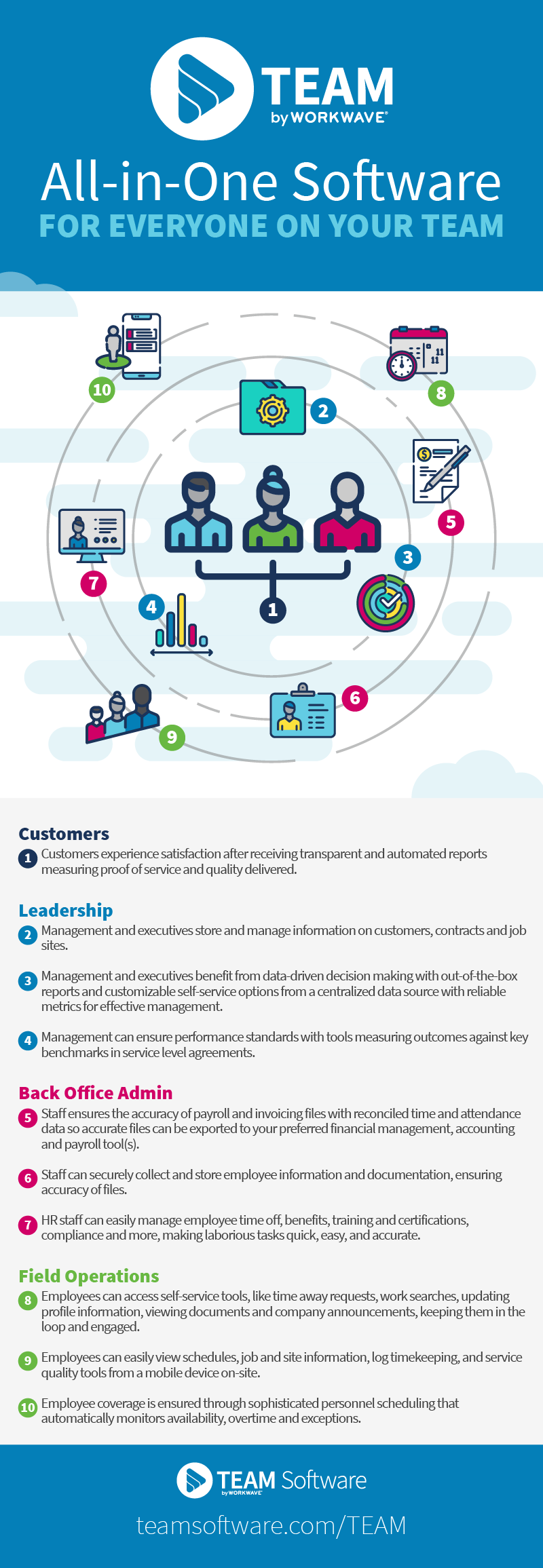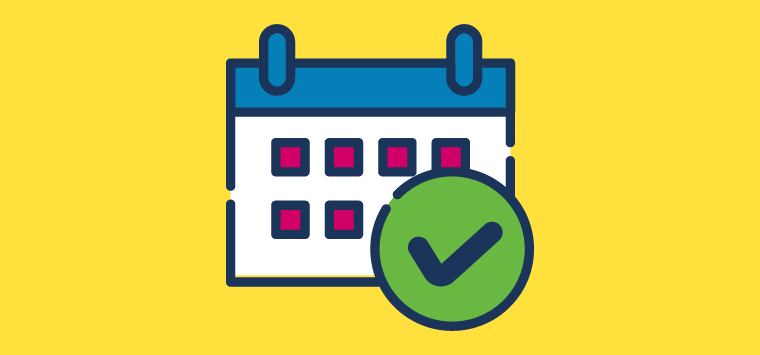Integrated Workforce Management System Tips for Better Scheduling
What is an integrated workforce management system?
Cleaning and security professionals have different options when it comes to choosing software to optimise, automate and organise processes for efficiency. Two of those include using a workforce management (WFM) solution or an integrated workforce management system.
Both options are designed to help reduce costs and increase efficiency by solving scheduling issues, while providing time and attendance support. However, an integrated workforce management system goes a step further than WFM systems by applying an all-in-one approach.
In short, an integrated workforce management system connects scheduling and time & attendance management with other core business functions, including human resources, contract details and locations, quality assurance and mobile access for field-based employees.
What are the benefits of an integrated workforce management system?
All-inclusiveness is the key difference between the two software solutions, which means there are more opportunities to streamline processes with integrated workforce management. And that translates to less duplicative data entry, fewer manual workflows and increased visibility.
An integrated workforce management system translates to spending less time, money and resources on manual workforce management. And that gives workers back their valuable work hours, so they can focus on higher level tasks.
Setting up an integrated workforce management system
The first step towards maximising an integrated workforce management system involves gaining a better understanding of the different types of available integrations. Find out if it is possible to streamline processes to avoid manually entering additional or duplicative information later on. This is how your payroll and human resource employees can save valuable time and energy.
Next, consider individual factors. Take into account the size of your company, its location and the number of office staff on payroll. Answers to these questions can provide valuable information on what tasks you are completing on a day-to-day basis and how you may be able to optimise some of them.
Daily procedure tips for better scheduling
TEAM by WorkWave offers valuable information to improve scheduling tasks. It can also automate certain processes to eliminate manual work.
- Changes to shifts that will incur overtime costs are made visible. When a change is made to a shift that will incur overtime, the system will warn the user. This allows the user to adjust hours to potentially avoid the more expensive times.
- Open shifts which will result in missed cleans are highlighted on a Dashboard. Users can search for suitable staff and ensure we don’t under deliver on service to the client.
- Slight variations in clocking in and out hours are automatically adjusted to the shift hours, saving on reconciliation time. When cleaners clock in a few minutes early or late, the system will automatically adjust those hours to what was rostered.
- Incorrect scheduling can incur unnecessary costs. As staff are scheduled onto shifts, the system automatically applies checks and warns the uses if a new shift will incur additional costs.
Take advantage of flexible scheduling
Self-scheduling works by allowing employees to pick up open duties, therefore keeping shifts filled and closing any gaps without time consuming back and forth messaging with supervisors. Employees can also let their managers know when they are available to work, eliminating the need for supervisors to make manual availability checks.
Criteria can be set up so only qualified employees can fill certain shifts depending on job requirements, ensuring that compliance is met and contract requirements are successfully completed.
Companies that use time and labour management software to introduce a self-scheduling element experience a number of benefits. Some of those include reduced overtime, improved employee engagement and retention. Plus, supervisors can focus their attention on more high-value responsibilities.
Continue to improve productivity
There’s no one-size-fits-all way to manage scheduling, especially for facilities management professionals. However, taking these steps and incorporating the daily and weekly processes can help a business become more productive.
Solid practices, efficient task management and accurate schedules pave the way for streamlined billing and payroll processes. These factors also boost employee morale and help with achieving results. Are you looking for ways to continue improving your business? Let’s look at it together.

